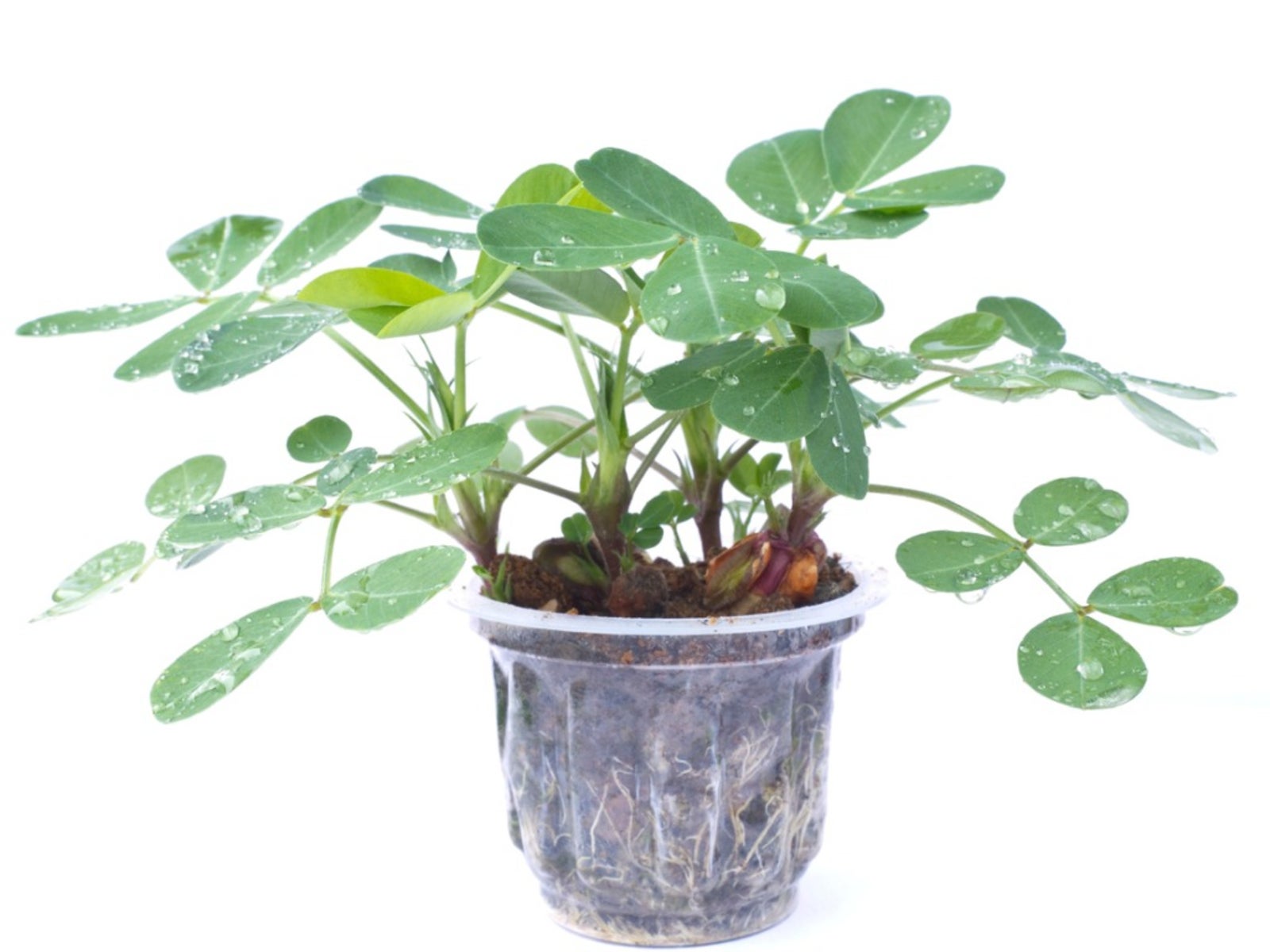Container Grown Peanuts: How To Grow Peanut Plants In Containers


If you travel to southeastern parts of the United States, you will, no doubt, see plenty of signs urging you to take the next exit for genuine southern-grown peaches, pecans, oranges, and peanuts. While these delicious fruits and nuts may be the pride of the South, those of us in northern areas can still grow some too. That said, peanuts require a long, warm growing season, so those of us in cooler climates need to grow them in pots to extend the growing season. Continue reading to learn how to grow peanut plants in containers.
Container Grown Peanuts
Peanuts, scientifically known as Arachis hypogaea, are hardy in zones 6 to 11. They are in the legume family and classified as tropical plants. It is because of this that many people in cooler climates may wonder, “Can you grow peanuts in containers?”. Yes, but they do have certain requirements. As tropical plants, they thrive in heat, humidity, full sun, and moist but well-draining soil. These growing needs should be considered before attempting to grow peanut plants in containers. When grown from seed, peanuts need at least 100 frost-free days to mature. They also need consistent soil temperatures of 70 to 80 degrees F. (21-27 C.) in order to germinate. In the north, it will be necessary to start peanut seeds indoors, at least a month before the last frost date. You’ll also need to continue growing peanuts indoors if cool weather is expected. There are four main types of peanuts available as seed:
- Virginia peanuts bear large nuts and are excellent for roasting.
- Spanish peanuts are the smallest nuts and are often used in nut mixes.
- Runner peanuts have medium-sized nuts and are the variety most commonly used for peanut butter.
- Valencia peanuts are the sweetest tasting peanuts and have bright red skins.
Peanut seeds can be purchased online or at garden centers. They are actually just raw peanuts, still in the shell. Peanuts should be kept in the shell until you are ready to plant them. At planting, shell them and plant the nuts in seedling trays 1 to 2 inches (2.5-5 cm.) deep and 4 to 6 inches (10-15 cm.) apart. After plants sprout and reach about 1 to 2 inches (2.5-5 cm.) tall, you can carefully transplant them to larger pots.
How to Grow Peanut Plants in Containers
Peanut plant care in pots is very similar to the process of growing potatoes. The soil or organic materials are hilled up around both plants as they grow so that they will produce more and better-tasting fruit. It is because of this, container-grown peanuts should be planted in pots more than a foot (30.5 cm.) or so deep. Usually, at about five to seven weeks after germination, peanut plants will form small, yellow flowers that look like sweet pea flowers. After the flowers fade, the plant produces tendrils, called pegs, which will grow back down toward the soil. Allow it to do this, then hill up organic material around the plant. Repeat this “hilling up” each time the plant reaches 7 to 10 inches (18-25.5 cm.) in height. One peanut plant can produce 1 to 3 lbs. (0.5-1.5 kg.) of peanuts, depending on how high you can hill it up. Depth may be limited for container-grown peanuts. Organic materials provide plenty of nutrients for peanut plants, but once it flowers, you can feed the plant with a fertilizer high in potassium and phosphorus. Nitrogen is not necessary for legumes. Peanut plants are ready to harvest in 90 to 150 days after germination when the foliage turns yellow and wilts. Peanuts are very nutritional, with high protein levels, as well as vitamin B, copper, zinc, and manganese.
Sign up for the Gardening Know How newsletter today and receive a free copy of our e-book "How to Grow Delicious Tomatoes".
